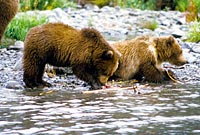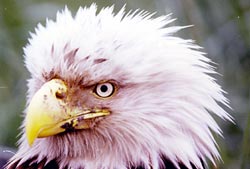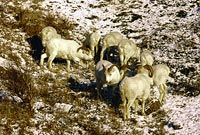 |
 |
Cancellation Specials Available Today!!
Call Us Today Toll Free:
1-888-462-1521
|
|
 |
| |





|
|
 |
|
Things to Do and See to Fulfill Your Perfect Alaska Vacation |
Clam digging
Digging razor clams is a lot of fun for the whole family. Kids love trying to catch these fast digging clams. If you stay at our lodge, we will supply you with hip boots, shovels, clam shovels, buckets, and we can teach you what to look for and how to dig these great tasting clams. Each person 16 and over needs a fishing license and the limit is 45 per person including kids (see our recipes page for ways to cook your clams).
Hiking
Hiking in Alaska is as varied as the countryside. In many parts of the state, you’re likely to encounter wildlife, such as moose and bears. In some areas, especially in those areas that are higher in elevation, hikers may see dall sheep, and in tundra areas, caribou. On the Kenai Peninsula we have a lot of trails within 1 hour from our lodge. Here are a few of our Local Trails.
• Exit Glacier Trail: This trail brings you to the face of the glacier. This trail is right off the Seward highway.
• Lower Russian Lake Trail: This trail is located in the cooper Landing area, it is an easy 3 mile hike to the beautiful Lower Russian Lake within the Chugach National Forest. A 2 mile trail that runs off this one goes up to the Russian River Falls. You can see lot of bears ands you can watch sockeye salmon jumping the falls in their determined attempt to return to their primary stream of origin.
• Resurrection Pass Trail: This is one of the most popular multi-day hikes, covering 38 miles of trail transitioning from forested areas to open valleys.
• Carter Lake Trail: This is a moderately challenging 3 mile hike to the spectacular blue waters of Carter Lake, and then on to Crescent Lake where you can do some grayling fishing. On this hike you can see dall sheep, black bears, and moose.
There are many more great hiking trails to adventure on.
Mountain Biking Trails
• Lower Russian Lake Trail: This is a easy 3 mile trail at 200 ft elevation.
• Johnson Pass Trail: This trail is 23 miles and about 1000 ft elevation.
• Resurrection Pass Trail: This trail is 38 mils long and about 2200 ft elevation.
Kayaking
The scenery will vary from location to location, some tours focus on kayaking in areas that have a lot of glaciers, while others will be in areas of secluded islands and fjords. Kayaking allows you to get to places that you wouldn’t be able to reach otherwise, and so you’ll see both land and sea mammals that you might not ordinarily get to see. Depending on the area you choose, you may see bears, deer and moose on land, and seals, sea otters, porpoises and whales in the water. Pluse you can see many sea birds and ducks.
Rafting
You can do some class 3, 4 and 5 whitewater trips on the wonderful Six Mile Creek. If your looking for some heart pumping excitement, come take a trip down the creek. If you would like an easy drift then you might enjoy floating on the Kenai River.
Gold Detecting & Panning
When in the state of Alaska, there's one thing to be certain of; there's gold under your feet. It’s up to you to find it. There are different ways to find this treasured ore of Alaska. One way is to use gold detectors, ( we have 5 of these available). Other ways are by using slice boxes, high bankers, and the old fashion method of gold panning. Visitors at our lodge may use our tools for free and if you stay somewhere else you can rent these items from us.
Golfing
There are three golf courses within 20 minutes of our lodge. There is a 9 hole course directly across the highway from our lodge. In Kenai there is an 18 hole course. The other one is brand new it is down Funny River Road. Visotors of our lodge are free to use our golf equipment.
Horseback Riding
If you are looking for a unique way to see the wild Alaska country, horseback riding allows you to go father and see more things. This adventure is around three hours long. If the back country isn’t your cup of tea you can ride along the beaches of the Cook Inlet.
Vegetation
Summer in Alaska is when the world seems the greenest. But you will always see lots of other splashes of color. The variety of our plant life seems endless and they grow everywhere.
They are beautiful to the eye but they also have other uses, such as medicine or food. Here are a few varieties for you to look at.
• Pond Lily: Bright yellow and plastic like, they grow atop the water in lakes. Growing up from the lake floor, they float via broad, spade like leaves. Their roots are a source of starch and the seeds inside its heads may be dried and popped like corn.
• Wild Iris: An early bloomer, it boasts dark purple blossom burgeons atop thick blade-like stalks. Common in sunny spots along river banks and lake shores.
• Monkshood: Another purple and pretty plant, but one of the most deadly in Alaska. Never eat this plant. Its tall and stately with blooms that resemble the helmets of warriors. It grows mostly in grassy areas.
• Lupine: Also purplish and slightly poisonous, but not deadly, the lupine grows in clusters.
• Dandelion: One of the most common plants found on the peninsula, especially in areas with disturbed soil. A member of the lettuce family, the leaves of younger plants can make a good salad, while the blooms can be fried in batter or used to make wine.
• Fireweed: Fireweed is completely edible and extremely common in the State of Alaska. A member of the primrose family, its roots, stalks, leaves, and flowers of the younger plants make a tasty salad. Its high in vitamins and contains some protein.
• Pineapple Weed: Smelling faintly of pineapples this short, aromatic plant has a yellow, rounded top and flowers on short stems. It grows in open places, and even in disturbed soil. Flowers may be crushed and dried as flour, or dried and steeped as a mild tea.
• Tower Mustard: Tall and wispy with yellow flowers, its green can be eaten as a salad. Often found in disturbed soil and not very common.
• Wild Geranium: Pretty plants that grow short in grassy areas and has blossoms that are light blue or violet. Its roots can be refined into an effective astringent.
• Wild Chive: Common to moist areas, it is very similar to the domestic chive. Tall and grass like, its leaves are best in the spring and the bulbs in the summer and fall.
Wildlife
Roaming among Alaska is some of the most varied wildlife in the world.
|
 |
 |
 |
 |
| |
|
Call Toll Free: 1-888-462-1521 |
|
 |
|


